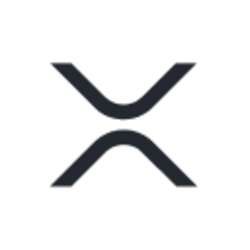Ripple CTO David Schwartz explains that XRP Ledger’s institutional adoption is limited mainly by regulatory constraints, not technology, and highlights XRP’s unique role as a flexible bridge currency in global payments.
-
Regulatory restrictions currently limit XRP Ledger’s on-chain institutional activity despite Ripple’s extensive partnerships.
-
Upcoming features like permissioned domains will enable compliant institutions to transact securely on the XRP Ledger.
-
Schwartz emphasizes XRP’s advantage as a neutral bridge currency over stablecoins in fragmented markets.
Ripple CTO outlines XRP Ledger’s adoption hurdles and future solutions, emphasizing XRP’s bridge currency role. Stay informed with COINOTAG’s expert crypto insights.
What Are the Main Challenges to Institutional Adoption of the XRP Ledger?
Institutional adoption of the XRP Ledger is primarily hindered by regulatory limitations rather than technological issues. Ripple CTO David Schwartz highlighted that regulatory risks restrict on-chain activity, especially when dealing with unknown or unsanctioned counterparties via decentralized exchanges. This cautious approach affects the visible volume on the XRP Ledger despite Ripple’s numerous partnerships with financial institutions.
How Will Permissioned Domains Improve Compliance on the XRP Ledger?
Permissioned domains are an upcoming feature designed to allow compliant institutions to transact only with vetted participants on-chain. This innovation aims to maintain the ledger’s openness while addressing regulatory concerns by restricting interactions to authorized entities. Schwartz explained that even Ripple itself cannot currently use the XRPL decentralized exchange for payments due to these constraints, underscoring the importance of permissioned domains for broader institutional use.
Why Is XRP Preferred Over Stablecoins in Certain Use Cases?
XRP’s volatility is an asset rather than a liability when used as a bridge currency. Unlike fiat-pegged stablecoins, XRP provides liquidity and flexibility across fragmented multi-stablecoin environments. Schwartz noted that XRP acts as a neutral connector between various assets, facilitating efficient cross-border payments where stablecoins may lack interoperability or sufficient liquidity.
What Advantages Does the XRP Ledger Offer Compared to Proprietary Chains?
Schwartz emphasized that open, liquid networks like the XRP Ledger offer superior advantages over proprietary chains. He pointed out that major players such as BlackRock prefer XRPL due to its accessibility and liquidity. The CTO rhetorically questioned why stablecoin issuers like Circle do not launch USDC on their own chains, highlighting that liquidity thrives on open networks rather than isolated ecosystems.
How Does Ripple’s Enterprise Licensing Affect XRP Ledger Usage?
Ripple’s enterprise operations face regional licensing restrictions that limit direct on-chain activity. However, the XRP Ledger itself remains globally neutral and open. Schwartz reaffirmed that XRP is deeply integrated into Ripple’s payment infrastructure, even if much of its utility is not immediately visible on-chain. This distinction clarifies that regulatory compliance impacts Ripple’s business operations more than the ledger’s technical capabilities.
Conclusion
Ripple CTO David Schwartz’s insights clarify that XRP Ledger’s institutional adoption challenges stem from regulatory, not technical, barriers. With upcoming features like permissioned domains and XRP’s unique role as a bridge currency, the ledger is poised for broader compliant use. COINOTAG continues to monitor these developments, providing expert analysis on XRP’s evolving ecosystem.
Frequently Asked Questions
What are the regulatory challenges facing XRP Ledger adoption?
Regulatory challenges include restrictions on transactions with unknown or unsanctioned parties, limiting on-chain institutional activity despite Ripple’s partnerships.
How will XRP Ledger’s new features improve institutional use?
Features like permissioned domains will allow compliant institutions to transact securely with vetted parties, addressing regulatory concerns and expanding usage.
Key Takeaways
- Regulatory constraints: Main barrier to visible institutional activity on XRP Ledger.
- Permissioned domains: Upcoming solution to enable compliant on-chain transactions.
- XRP as bridge currency: Offers liquidity and flexibility unmatched by stablecoins.
-
Ripple CTO David Schwartz addresses XRP Ledger’s institutional adoption hurdles, emphasizing regulatory factors over technical limitations.
-
Permissioned domains will enable compliant institutions to transact securely on the ledger, improving adoption prospects.
-
Schwartz highlights XRP’s role as a flexible bridge currency, offering advantages over stablecoins in liquidity and interoperability.
Ripple CTO reveals XRP Ledger’s adoption challenges and solutions, highlighting XRP’s bridge currency benefits. Follow COINOTAG for expert crypto news.
Ripple CTO Breaks Down XRP Ledger’s Institutional Adoption Challenges
Ripple CTO David Schwartz explained that the XRP Ledger’s limited institutional adoption is mainly due to regulatory restrictions. These constraints prevent on-chain transactions with unknown or unsanctioned counterparties, resulting in subdued on-chain volume despite Ripple’s extensive partnerships. Schwartz stressed that technological capability is not the issue.
How Permissioned Domains Will Enable Regulatory Compliance
Permissioned domains are an upcoming feature designed to allow only vetted institutions to transact on the XRP Ledger. This approach addresses regulatory concerns by restricting counterparties to compliant entities, while preserving the ledger’s decentralized nature. Schwartz noted that even Ripple cannot currently use the XRPL decentralized exchange for payments due to these limitations.
Why XRP Is Preferred Over Stablecoins for Certain Use Cases
XRP’s volatility is advantageous when used as a bridge currency. Unlike fiat-pegged stablecoins, XRP provides liquidity and flexibility across fragmented markets. Schwartz emphasized that XRP acts as a neutral connector between multiple assets, which is critical in a multi-stablecoin environment where interoperability is limited.
Advantages of the XRP Ledger Over Proprietary Chains
Schwartz highlighted that open, liquid networks like the XRP Ledger offer superior benefits compared to proprietary chains. He pointed out that major financial players prefer XRPL for its accessibility and liquidity. This openness fosters a thriving ecosystem, unlike isolated proprietary chains.
Conclusion
David Schwartz’s insights clarify that regulatory challenges, not technology, limit XRP Ledger’s institutional adoption. With permissioned domains and XRP’s unique bridge currency role, the ledger is positioned for expanded compliant use. COINOTAG remains committed to delivering authoritative analysis on XRP’s evolving landscape.
